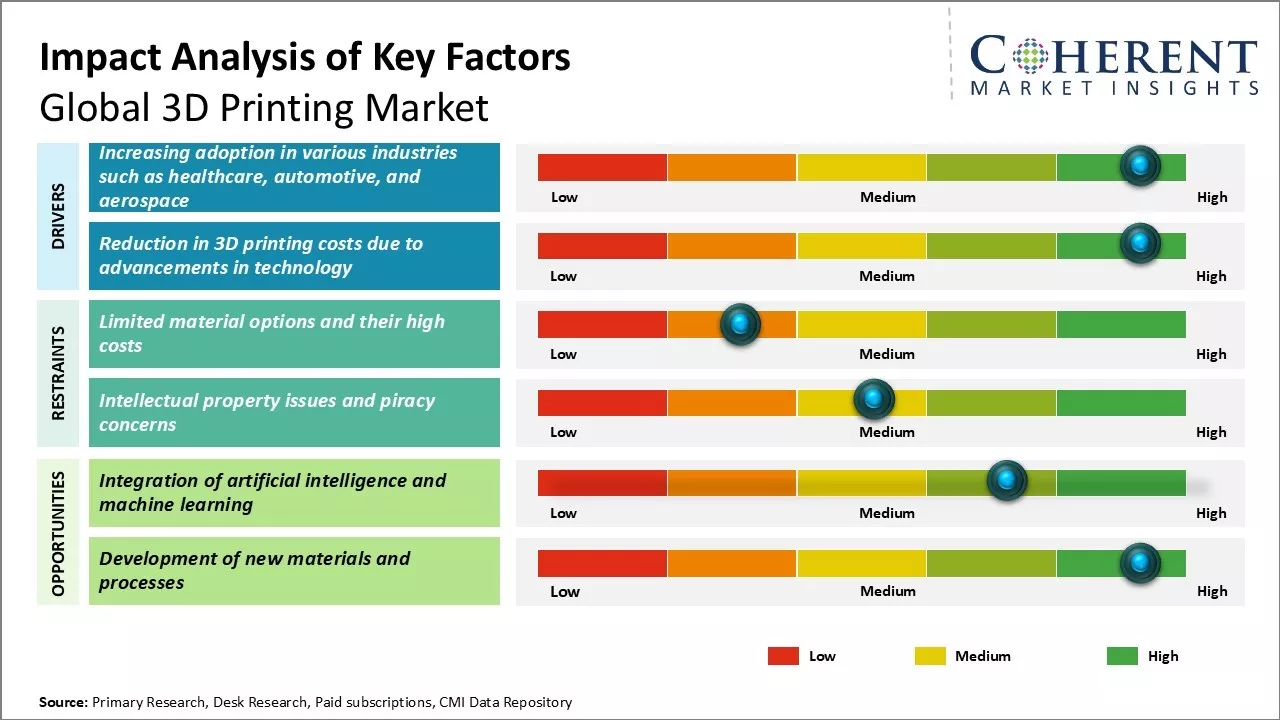The Global 3D Printing Market is estimated to be valued at USD 22.95 Billion in 2025 and is expected to reach USD 84.22 Billion by 2032, exhibiting a compound annual growth rate (CAGR) of 20.4% from 2025 to 2032.

To learn more about this report, Request sample copy
The widespread adoption of 3D printing across various industries such as automotive, aerospace & defence, healthcare, etc. is anticipated to drive the market growth during the forecast period.
Market Driver - Increasing adoption in various industries such as healthcare, automotive, and aerospace
The global 3D printing market has been witnessing steady growth over the past few years owing to the increasing adoption of 3D printing across various industries such as healthcare, automotive, and aerospace. 3D printing helps design and manufacture complex customized products with ease, bringing itself into demand from many application areas.
Healthcare industry has emerged as a promising application area for 3D printing with growing focus on personalized medicine. 3D printing allows precise customization of medical devices and implants based on patient's needs which traditional manufacturing cannot achieve. It enables the production of patient-matched surgical guides, customized hearing aids, and prosthetics. As personalized healthcare gains more prominence, dependency on 3D printing within healthcare sector will increase substantially over coming years.
Automotive industry has also started embracing 3D printing for production of prototype parts and tools during design and development stage. 3D printing helps automakers test intricate design upgrades on printed models in very short time as compared to conventional manufacturing approaches. Many luxury and sports car makers have incorporated 3D printing to produce cosmetic body parts or functioning components with complex internal structures. As vehicles move towards lightweight construction, 3D printed parts will play a bigger role in assembly of future vehicles. The technology also assists in rapid tooling applications for manufacturing jigs and fixtures.
Aerospace is one the biggest success stories for 3D printing owing to its capability to produce intricate, lightweight parts, and assemblies. Leading aircraft makers have certified several 3D printed parts for installation in passenger planes and certified 3D printed fuel nozzles are already flying. 3D printing of complex inner frames and customized cabin components is bringing more efficiency in aircraft interior manufacturing. Space agencies have been at the forefront of implementing 3D printing for critical components of satellites and launch vehicles. Growing demand for unmanned and electric aircraft will further spur the greater use of 3D printing across the aerospace supply chain.
Joining thousands of companies around the world committed to making the Excellent Business Solutions.
View All Our Clients